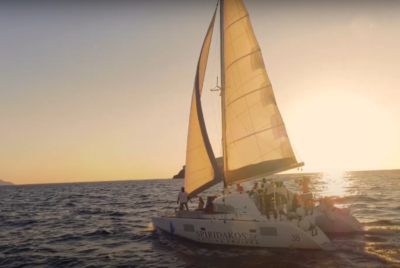Sailing Ropes: A Comprehensive Guide for Enthusiasts
Ahoy there, fellow sailing enthusiasts! If you’ve ever felt the wind in your hair and the thrill of the open water, you know that sailing is an art that combines skill, technique, and the right equipment. One crucial element of sailing that often goes unnoticed but plays a pivotal role is the humble sailing rope. In this guide, we’ll embark on a journey through the world of sailing ropes, from understanding their types to mastering the art of handling and maintenance. Let’s set sail on this rope-tangled adventure!
Understanding the Importance of Sailing Ropes
Sailing ropes are more than just lines that hold your boat together. They are the lifelines that connect every part of your vessel, ensuring control, safety, and efficient sailing. These ropes serve as extensions of your commands, guiding sails, controlling lines, and securing equipment. The right choice of ropes can significantly enhance your sailing experience, providing you with confidence and control even in challenging conditions.
Different Types of Sailing Ropes
Main Sheets and Jib Sheets
Main sheets and jib sheets are the ropes that control your sail’s angle and position. Choosing ropes with the right amount of stretch and strength is essential for responsive sail adjustments.
Halyards
Halyards are used to raise and lower sails. Opt for durable ropes that won’t stretch under load, ensuring smooth sail operation.
Control Lines
Control lines manage various aspects of sailing, from adjusting sails to controlling rigging. Different types of control lines require different characteristics, so choose ropes that align with their intended use.
Dock Lines
Dock lines are vital for secure docking. These ropes need to be strong, durable, and resistant to wear caused by friction against docks and cleats.
Factors to Consider When Choosing Sailing Ropes
Material and Durability
Consider ropes made from materials like polyester, nylon, or Dyneema. Each material has its advantages, such as durability, UV resistance, and minimal stretch.
Diameter and Thickness
The thickness of the rope affects its grip and handling. Thicker ropes might provide a better grip, but they can also be more challenging to manage. Find the right balance for your needs.
Stretch and Strength
Certain scenarios require ropes with minimal stretch for precise control, while others benefit from a bit of elasticity. Factor in the strength required to withstand the load.
Handling and Grip
Comfortable handling is key. Ropes with good grip, even when wet, prevent accidents and ensure efficient maneuvering.
Proper Maintenance of Sailing Ropes
Cleaning and Storage
Regularly clean ropes with freshwater and mild soap to remove salt and dirt. Store them in a cool, dry place away from direct sunlight to prolong their lifespan.
Inspecting for Wear and Tear
Regularly inspect your ropes for signs of fraying, abrasion, or other damage. Replace worn ropes promptly to prevent accidents.
Replacing Ropes
When replacing ropes, ensure the new ones match the old in terms of strength and material. Gradually transition to new ropes to avoid sudden failures.
Essential Knots for Sailing Ropes
Bowline Knot
The bowline knot creates a secure, non-slip loop at the end of a rope, perfect for securing sheets to sails or attaching ropes to fixed points.
Clove Hitch
A versatile knot for attaching ropes to cylindrical objects, like securing fenders to rails.
Figure Eight Knot
Used to prevent the end of a rope from slipping through a fitting, the figure eight knot is a reliable stopper knot.
Sheet Bend
When you need to join two ropes of different diameters, the sheet bend provides a secure connection that won’t jam.
Tips for Handling Sailing Ropes Efficiently
Coiling and Storing Ropes
Properly coiling ropes prevents tangling and makes them easier to handle. Hang coiled ropes in a dry, ventilated area for storage.
Preventing Tangles and Knots
Keep ropes organized and tangle-free by using bungee cords or rope bags. Labeling ropes by function also aids quick identification.
Quick Release Techniques
Learn quick-release knots and techniques for emergencies. Being able to release a rope swiftly can prevent accidents and save lives.
Sailing Rope Accessories and Hardware
Blocks and Pulleys
These devices reduce the effort required to hoist and control sails by increasing mechanical advantage.
Cleats and Clutches
Cleats and clutches secure ropes in place. Choose ones that match the diameter of your ropes for optimal grip.
Winches
Winches assist with raising and trimming sails, especially in larger vessels. Proper winch operation ensures efficient sail adjustment.
Enhancing Safety with Sailing Ropes
Securing Crew and Equipment
Use ropes to secure crew members while sailing in challenging conditions. Harnesses and safety lines prevent falls overboard.
Emergency Procedures
Train your crew in essential emergency rope-handling procedures, such as man-overboard drills and quick reefing techniques.
Advanced Techniques for Sailing Rope Handling
Tacking and Jibing
Master the art of tacking (turning the bow through the wind) and jibing (turning the stern through the wind) with precise rope handling.
Using Ropes for Sail Control
Explore advanced techniques like adjusting sail shape using cunningham and outhaul lines for enhanced performance.
Environmental Considerations and Sustainability
Choosing Eco-Friendly Ropes
Consider ropes made from sustainable materials to minimize your environmental impact. Hemp and recycled materials are excellent choices.
Proper Disposal
When it’s time to replace ropes, ensure they are disposed of responsibly. Recycle or repurpose them whenever possible.
Customizing Sailing Ropes for Your Boat
Personalized Lengths and Configurations
Tailor your ropes to your boat’s specifications for optimal performance and ease of use.
Color Coding for Identification
Use color-coded ropes to quickly identify their purpose, streamlining sail adjustments and maneuvers.
Navigating Challenging Weather Conditions
Strong Winds and Heavy Seas
In challenging weather, adjust your rope handling techniques to ensure safe and controlled sailing.
Rain and Humidity
Protect your ropes from rain and humidity by using waterproof bags and covers to prevent degradation.
Exploring Sailing Rope Innovations
High-Tech Fibers and Materials
Stay updated on the latest developments in rope technology, such as ropes made from high-strength fibers like Dyneema.
Smart Ropes
Explore the potential of smart ropes embedded with sensors that provide real-time feedback on rope tension and strain.
Conclusion
Sailing ropes are the unsung heroes of every sailing adventure, ensuring safety, control, and an unforgettable experience. By understanding the types of ropes, mastering their handling, and considering factors like material and maintenance, you can elevate your sailing journey to new heights. So, next time you set sail, remember the vital role these ropes play and navigate the waters with confidence and expertise.
FAQs
What’s the difference between a halyard and a sheet?
Halyards are used to raise and lower sails, while sheets control the angle and position of the sails.
Can I use the same rope for different purposes?
While some ropes are versatile, it’s best to choose ropes that match the demands of their intended use for optimal performance.
Are there any eco-friendly options for sailing ropes?
Yes, ropes made from sustainable materials like hemp or recycled fibers are environmentally friendly choices.
What’s the advantage of using smart ropes?
Smart ropes with embedded sensors provide real-time feedback on rope tension and strain, enhancing safety and control.
How often should I inspect and replace my sailing ropes?
Regularly inspect ropes for wear and tear, and replace them promptly to ensure safety. The frequency depends on usage and conditions.










